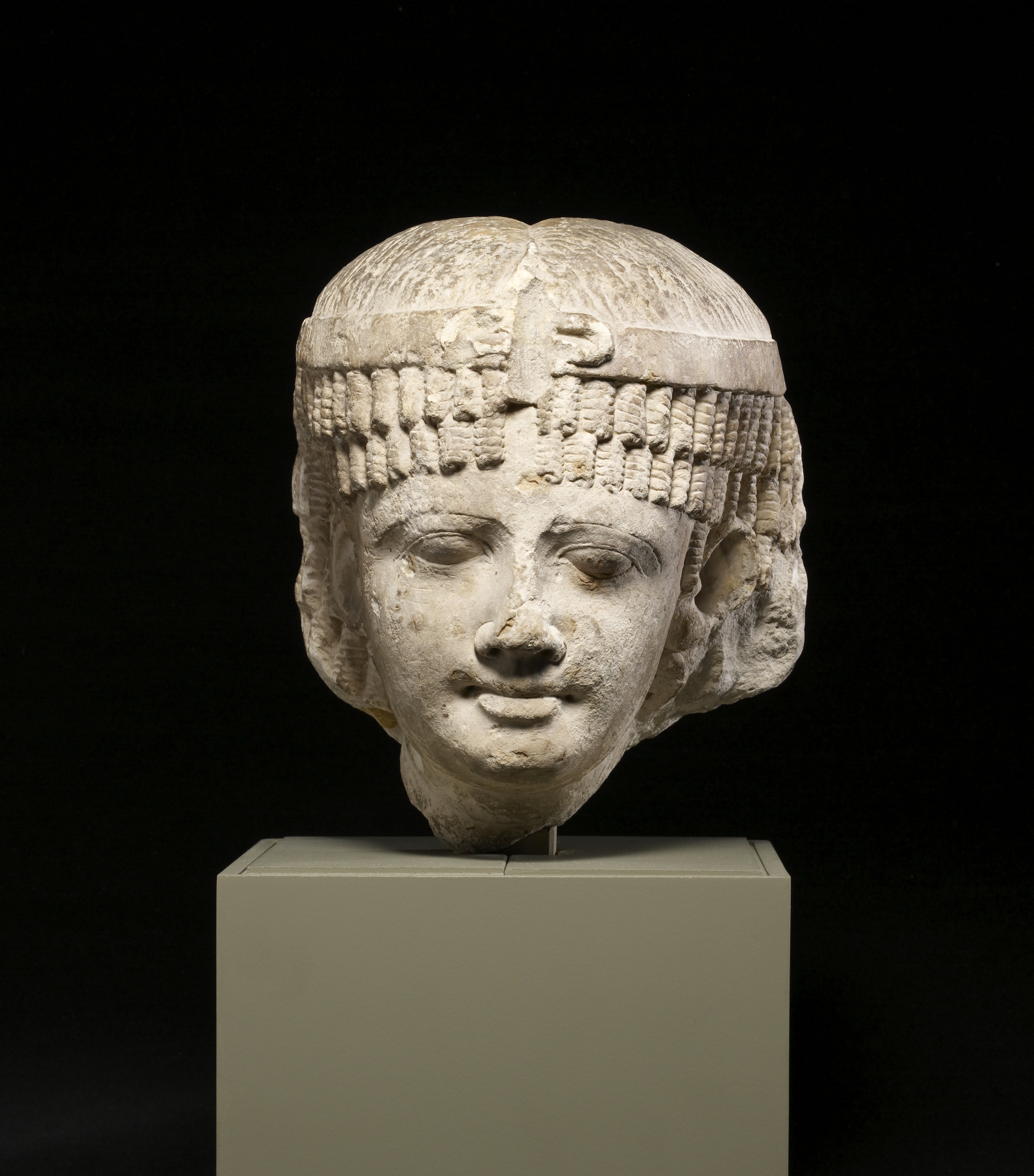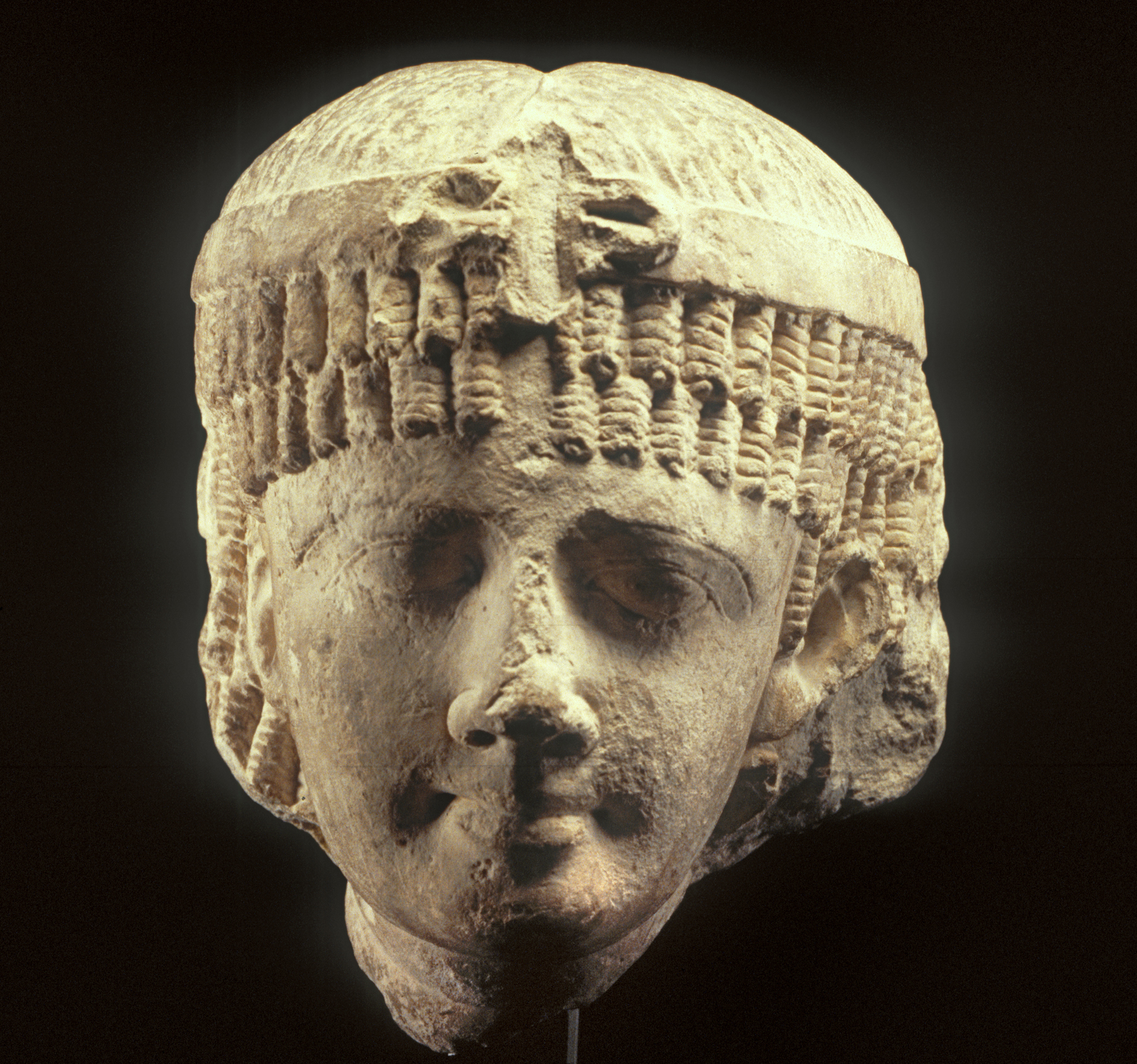Head of a Queen, Perhaps Cleopatra II or Cleopatra III
(Ancient Egypt and Nubia )
Shown wearing a heavy wig composed of tiers of "corkscrew" curls, the queen also has a headband with a coiled uraeus serpent above her brow. Of the seven Ptolemaic queens named Cleopatra (the last being the Cleopatra associated with Julius Caesar and Marc Antony), this head may represent Cleopatra II or her daughter, Cleopatra III, both of whom lived in the 2nd century BCE. The facial features are more individualized, reflecting the Greek influence of the Ptolemaic royal court.
Provenance
Provenance (from the French provenir, 'to come from/forth') is the chronology of the ownership, custody, or location of a historical object. Learn more about provenance at the Walters.
Dikran Kelekian, New York and Paris [date and mode of acquisition unknown]; Henry Walters, Baltimore, 1928, by purchase; Walters Art Museum, 1931, by bequest.
Exhibitions
| 1988-1989 | From Alexander to Cleopatra: Greek Art of the Hellenistic Age. The Walters Art Gallery, Baltimore. |
Conservation
| Date | Description | Narrative |
|---|---|---|
| 10/18/1998 | Examination | survey |
| 6/2/2000 | Examination | examined for exhibition |
Geographies
Egypt (Place of Origin)
Measurements
9 3/4 x 7 x 8 7/8 in. (24.7 x 17.8 x 22.5 cm)
Credit Line
Acquired by Henry Walters, 1928
Location in Museum
Accession Number
In libraries, galleries, museums, and archives, an accession number is a unique identifier assigned to each object in the collection.
In libraries, galleries, museums, and archives, an accession number is a unique identifier assigned to each object in the collection.
22.407




